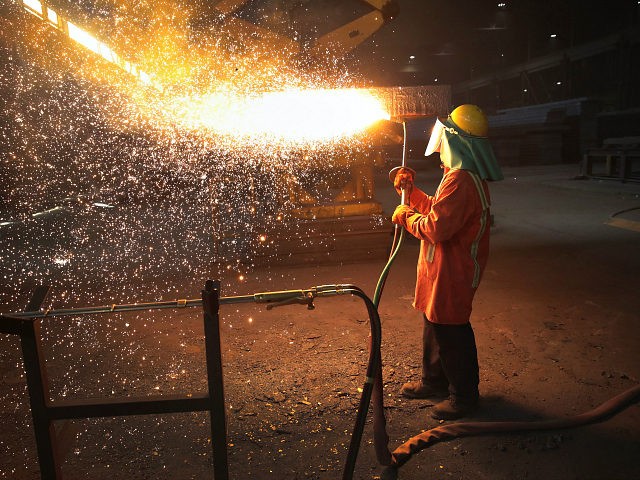Industrial production declined in August as production at utilities turned down sharply, data from the Federal Reserve showed Thursday.
The Fed said that total industrial production—including mining, manufacturing, utilities output—fell 0.2 percent.
That was below Wall Street’s estimate for a flat read on manufacturing output after a 0.5 percent increase in July. The July growth was revised down from 0.6 percent.
Utilities output fell 2.3 percent in August, driven by a 2.9 percent decline in electricity output. This may be an indication of demand destruction as prices for electricity jumped another 1.5 percent in August, bringing the year-over-year increase to 15.8 percent. That may be enough to convince some households and businesses to moderate their air-conditioning usage.
Manufacturing was stronger than expected, rising 0.1 percent compared with estimates for a flat reading. Motor vehicle production, however, fell by 1.4 percent, partly reversing the 3.2 percent gain in July. This will quash hopes that higher production levels would cool off inflation that saw new vehicle prices up 10.1 percent in August.
Excluding motor vehicles and parts, manufacturing production rose by 0.2 percent. This followed a 0.4 percent increase in July. But there were significant declines in May and June. These all add up to a 0.1 percent decline in output since April, Bank of America’s economists said in a client note Thursday.
Production of final consumer goods fell by 0.2 percent in August. This likely reflects the toll of high inflation on demand for consumer goods. Output is down 1.3 percent since April, according to Bank of America’s economists. Excluding autos, consumer goods output ticked up 0.1 percent. Business equipment production rose one percent, a big step up from the fractional gains seen in the first half of this year.
Construction supplies production fell 0.6 percent, reflecting weakness in housing. Similarly, the output of furniture and related products fell 2.0 percent.
Mining production was flat, which was a downside surprise compared with Wall Street expectations. It seems likely that the steep fall in gasoline prices may have held back oil production and refining.
Capacity utilization also moved slightly lower to 80 percent, missing expectations for capacity utilization to tick up one-tenth of a point to 80.3 percent.

COMMENTS
Please let us know if you're having issues with commenting.